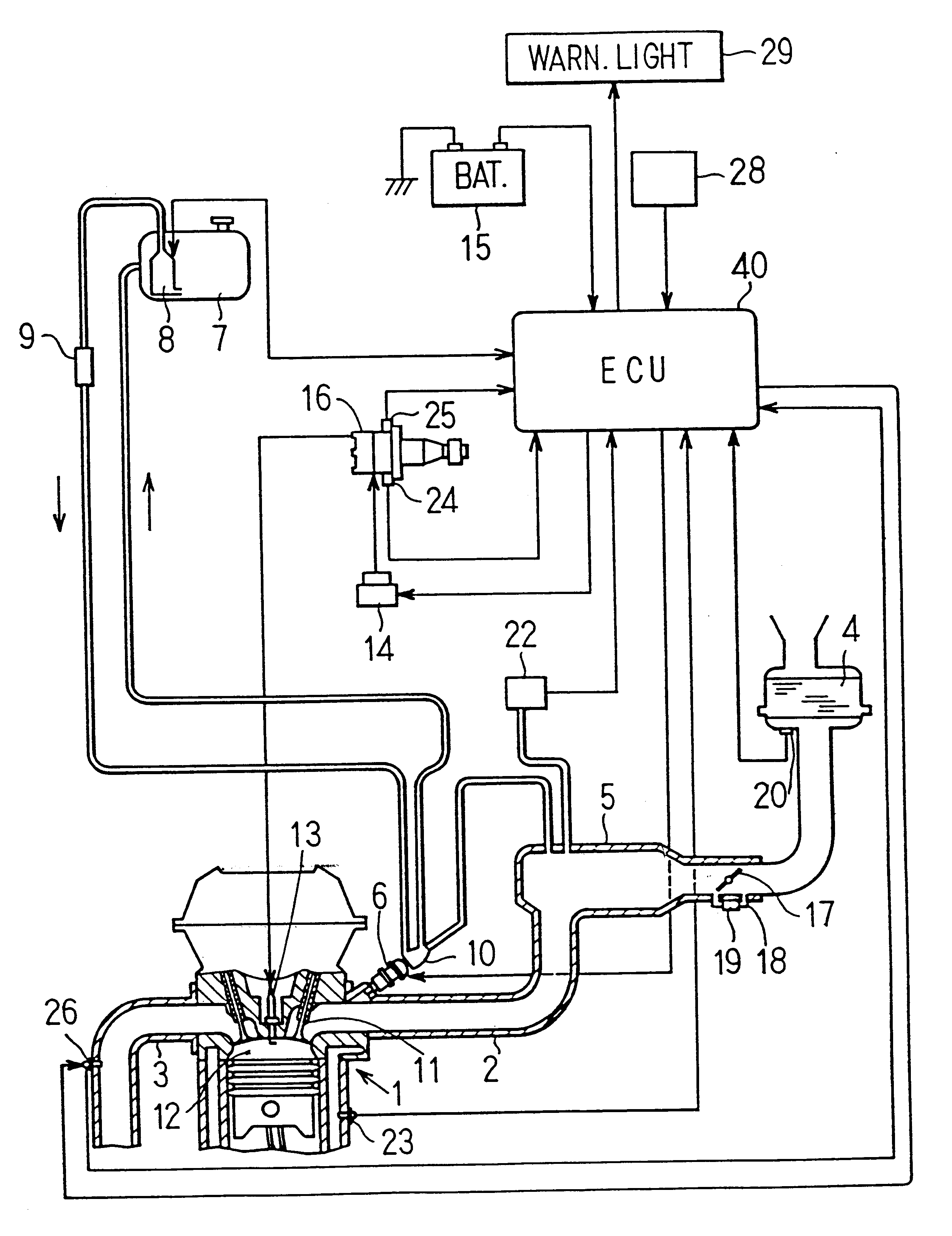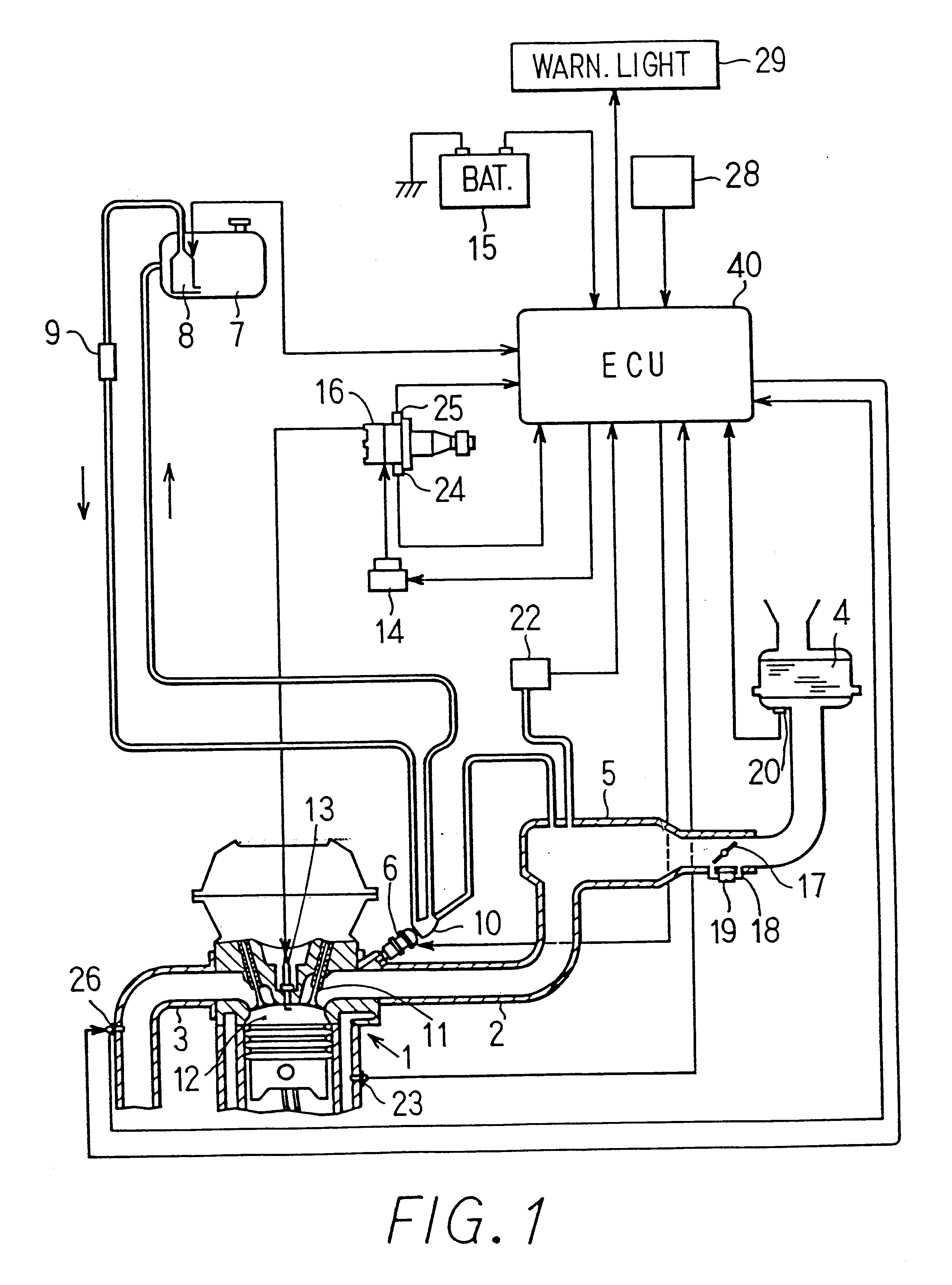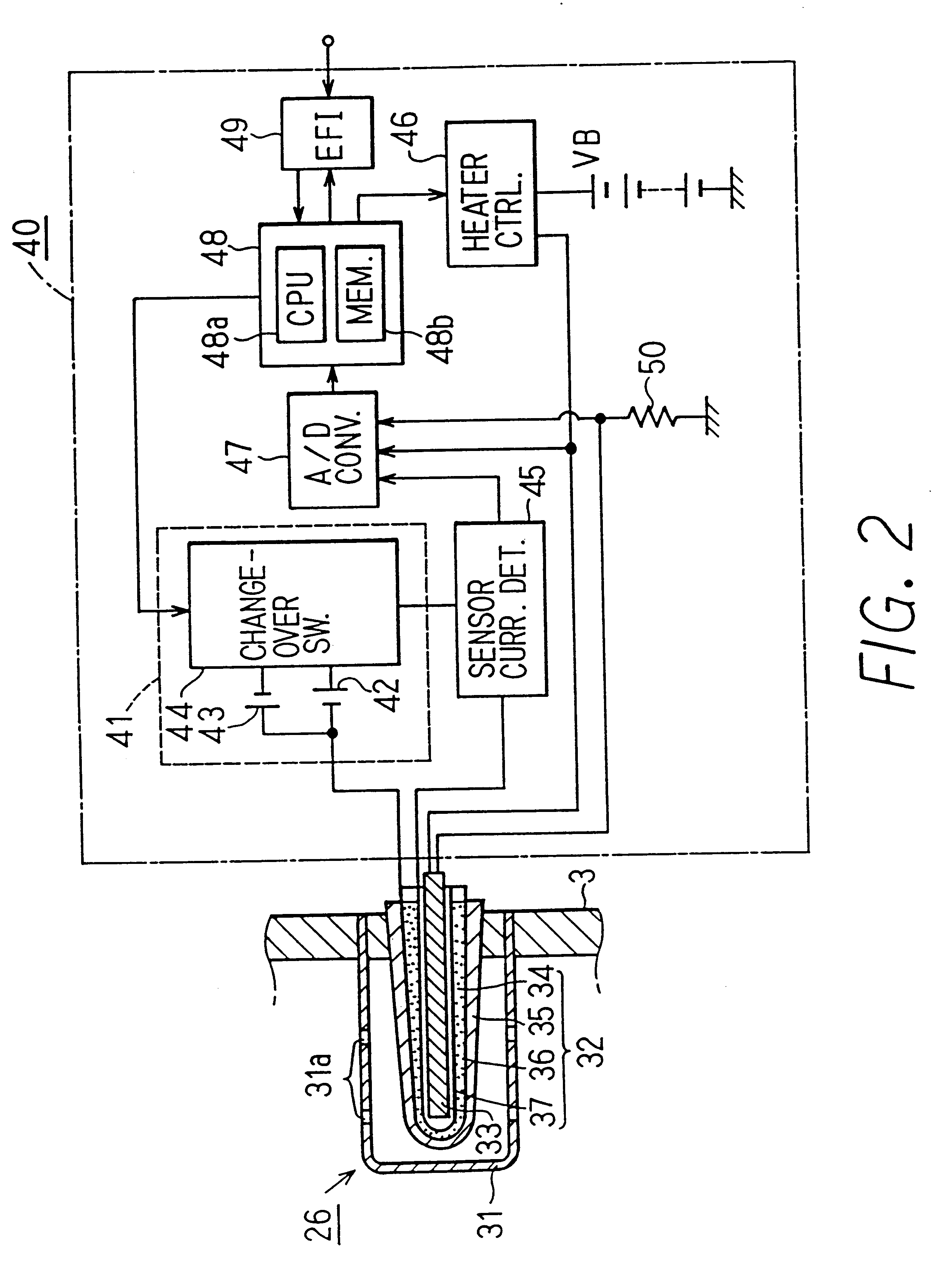Oxygen concentration detecting apparatus
a detection apparatus and oxygen technology, applied in the direction of instruments, material electrochemical variables, electric control, etc., can solve the problems of high cost, heavy degraded control precision of air-fuel ratio control systems, and conventional ar
- Summary
- Abstract
- Description
- Claims
- Application Information
AI Technical Summary
Benefits of technology
Problems solved by technology
Method used
Image
Examples
first embodiment
the present invention wherein the oxygen concentration detecting apparatus of the present invention is embodied in an air-fuel ratio control apparatus of an automotive internal combustion engine will be described with reference to the accompanying drawings.
FIG. 1 schematically illustrates the overall construction of the air-fuel ratio control apparatus of the internal combustion engine according to the first embodiment of the present invention. Referring to FIG. 1, a four-cylinder spark-ignition type gasoline internal combustion engine (hereinafter, referred to as "engine") 1 is connected to an intake pipe 2 and an exhaust pipe 3. An air cleaner 4 is provided in a most upstream portion of the intake pipe 2. A surge tank 5 is provided near the middle of the intake pipe 2. Disposed upstream from the surge tank 5 is a throttle valve 17 that is operated responsive to the depression of an accelerator pedal (not shown). A bypass passage 18 bypassing the throttle valve 1 is provided with a...
second embodiment
A second embodiment will be described mainly by referring to the features distinguishing this embodiment from the first embodiment. According to the second embodiment, the CPU 48a provided in the microprocessor 48 constitutes the heater control means, the fuel amount varying means and the sensor diagnostic means in the appended claims. FIG. 10 shows a sensor diagnosis routine according to the second embodiment.
In step 501 in FIG. 10, the CPU 48a determines whether preconditions for the sensor diagnosis have been established. The determination regarding the preconditions in step 501 corresponds to steps 301-307 in FIG. 8. In step 502, the CPU 48a determines whether the air-fuel ratio feedback is being performed. If either step 501 or step 502 makes a negative determination, the CPU 48a ends this routine. If both step 501 and step 502 make an affirmative determination, the CPU 48a proceeds to step 503.
In step 503, the CPU 48a stores the limit current Ip presently detected by the senso...
third embodiment
A third embodiment will be described. While the first and second embodiments open-loop control the heater 33 of the oxygen sensor 26, the third embodiment controls the heater 33 with feedback of the element temperature. According to this embodiment, the CPU 48a provided in the microprocessor 48 constitutes the element resistance detecting means, the heater power supply control means and the sensor diagnostic means in the appended claims.
FIGS. 12A-12D show timing charts indicating heater control according to the third embodiment. More precisely, the timing charts indicate the operation of the heater control performed from the starting of energization of the heater 33 in response to the starting of the engine 1 until sufficient activation of the oxygen sensor 26. According to this embodiments the heater control can be divided into four modes (1)-(4) as indicated in FIGS. 12A-12D, in view of the different purposes and control methods. These control modes will be described in sequence. ...
PUM
| Property | Measurement | Unit |
|---|---|---|
| surface area | aaaaa | aaaaa |
| surface area | aaaaa | aaaaa |
| temperature | aaaaa | aaaaa |
Abstract
Description
Claims
Application Information
 Login to View More
Login to View More - R&D
- Intellectual Property
- Life Sciences
- Materials
- Tech Scout
- Unparalleled Data Quality
- Higher Quality Content
- 60% Fewer Hallucinations
Browse by: Latest US Patents, China's latest patents, Technical Efficacy Thesaurus, Application Domain, Technology Topic, Popular Technical Reports.
© 2025 PatSnap. All rights reserved.Legal|Privacy policy|Modern Slavery Act Transparency Statement|Sitemap|About US| Contact US: help@patsnap.com



